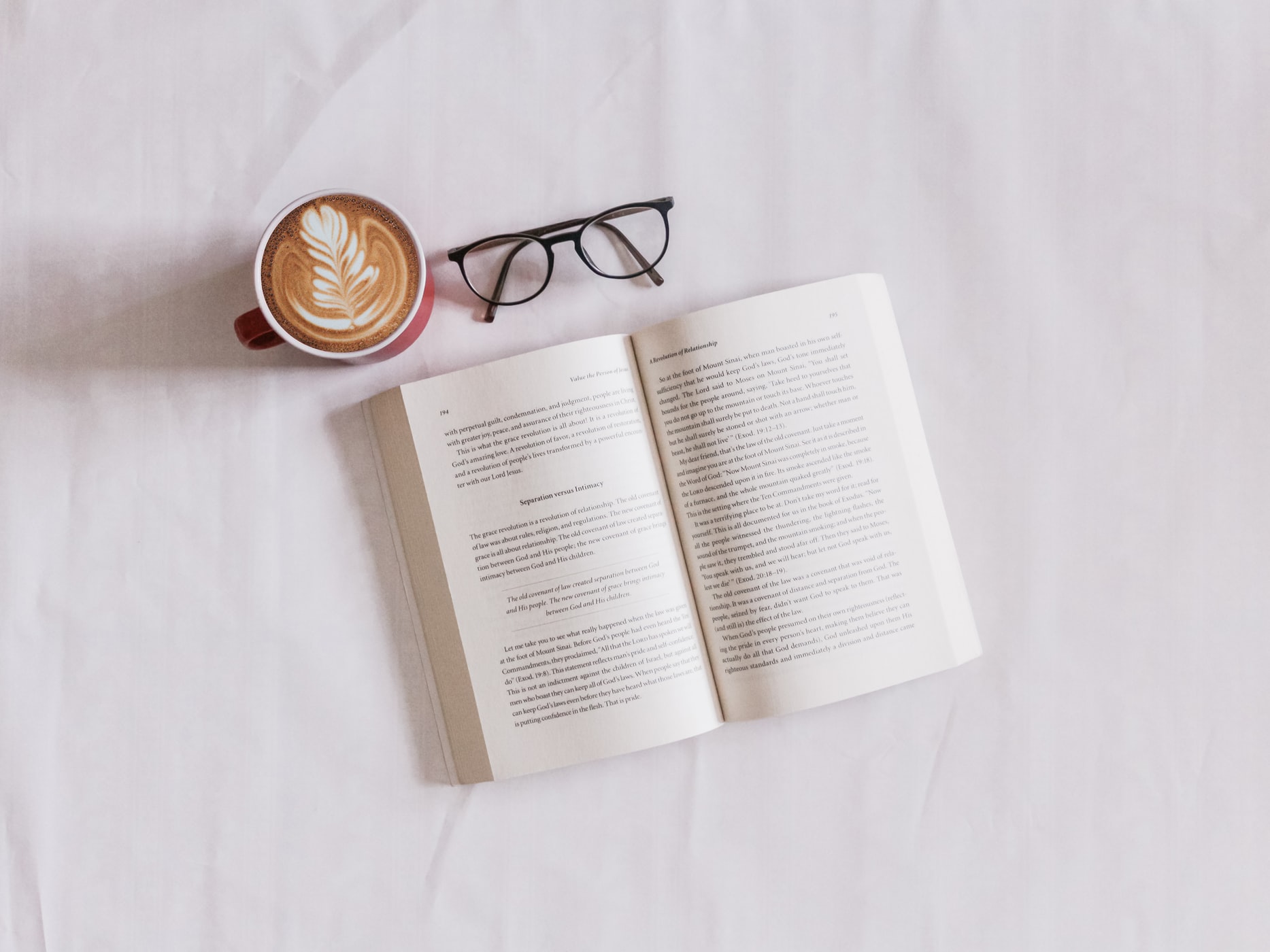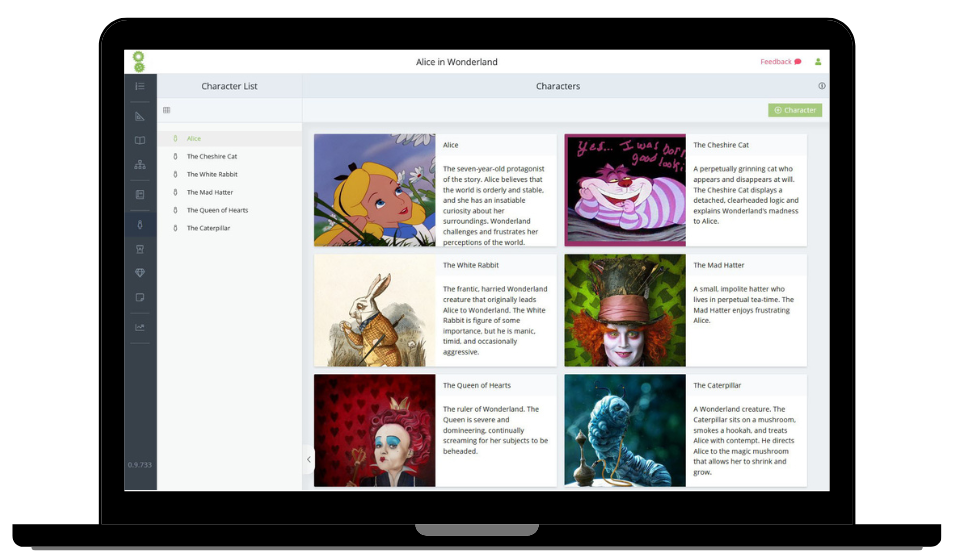
How to Start a Novel: A Beginner’s Guide to Writing Great Novel Openings
Wondering what’s the most effective way to start your novel?
The first few lines and pages of your novel are critical to get right. There’s a lot for you to achieve.
From hooking the reader to establishing your story world to setting up the ending — in this article we’ll look at why it’s so important to perfect the start of your book. We’ll examine five key elements of a great novel opening, with examples from popular novels to see how the experts do it.
Let’s jump right in.
Why is it so critical to get the start of your novel right?
Because If You Don’t, Nobody Will Read The Rest Of Your Book
In today’s busy world, readers are constantly faced with a myriad of things vying for their attention.
To prove yourself worthy of their time, you have to convince a reader in those first few pages that spending several hours reading your book will be more enjoyable than browsing Facebook, watching that new Netflix series, or reading a book by an author they already know and love.
This is even more true if you’re approaching agents who receive hundreds of manuscripts every week. They have only a few minutes to determine whether it’s going to be worth their extremely limited time to keep reading.
Because If You Set The Wrong Expectations, Your Readers Will Be Disappointed
If your readers do continue reading, they’ve done so because of what you’ve set up in the beginning. Setting the wrong expectations will lead to disappointment.
If your reader gets immersed in your book thinking it’s a regency romance, but halfway through it turns into a spy thriller, they’re not going to be impressed.
Likewise, if you start with a big action scene, but the rest of the book is about exploring intricate family relationships, you may have hooked people – but they’re the wrong people, and they’re going to feel cheated.
Because First Impressions Leave Lasting Impressions
Similar to setting expectations, giving the right first impression can pay dividends for the rest of the book. Missing this opportunity will leave you playing catch up.
For example, if your first chapter portrays a character to be insightful and wise, the reader will usually see that character in the same light for the rest of the book, even if you do little else to prove those traits.
If you set a creepy tone from the beginning, the reader will see even the most innocent of things as potentially menacing.
Five Key Elements to Writing a Great Novel Opening
There are many things to try to achieve in the start of your novel. The following elements will overlap and complement each other
Grab Their Attention – Surprise!
A very popular way to hook a reader is by presenting them with something that makes them do a double take and ask questions. In order to discover the answers, they’ll keep reading.
Very skilled authors achieve this with the very first line. Here are a few who did:
“It was the day my grandmother exploded.” Iain Banks, The Crow Road
“Every Summer, Lin Kong returned to Goose village to divorce his wife, Shuyu.” Ha Jin, Waiting
“It was a bright cold day in April, and the clocks were striking thirteen.” George Orwell, 1984
“On the morning of its first birthday, a baby was found floating in a cello case in the middle of the English Channel.” Katherine Rundell, Rooftoppers
In each of these examples, the author presents us with a statement which seems impossible, even ludicrous. Most of us would want to continue reading to discover how this statement could possibly be justified.
Note – presenting a surprising line is like writing a cheque. You need to be able to cash it in with a satisfying follow up, otherwise your readers will feel like they’ve been swindled.
A killer opening line is probably the most like a hook, in that it sharply snags the reader and reels them in.
However, you don’t always have to be this abrupt
In Gail Honeyman’s Eleanor Oliphant is Completely Fine, the surprises don’t start until the second paragraph, and are scattered in among a deliberately mundane description of the character’s boring office job and routine life.
Her references to: attending her job interview with ‘a black eye, a couple of missing teeth and a broken arm’; how she might as well be doing invoices for ‘armaments, Rohypnol or coconuts’; and how when she gets cold calls she whispers ‘I know where you live’ down the phone, are even more surprising and intriguing by how casually she drops them in, in contrast to the mind-numbingly boring routine of her life.
Establish The Setting And Atmosphere

You need to orient the reader quickly to your story world, otherwise they will feel lost and disorientated, like they’ve been dropped somewhere without their senses.
The most basic things to establish are the location and time period.
This doesn’t mean you have to explicitly state either, but through the surroundings and the way the characters speak, look and behave, the reader should get a sense of whether they’re in a futuristic spaceship or Victorian London.
But you should aim to do more than just answer the questions of where and when.
From the first paragraph, the aspects of the setting you choose to describe and the way in which you describe them should build an atmosphere appropriate to your story, whether that’s quirky and light hearted or sinister and oppressive.
In The Girl on the Train, Paula Hawkins explicitly states the day, date, year and even time (morning), before anything else except the point of view character’s name (as the chapter title). Before the end of the first page we know we’re in London.
But further to the objective time and location, Hawkins builds the atmosphere of the setting.
By describing abandoned clothing, fly-tipping, discarded scraps and lonesome shoes in the first paragraph, she builds up an atmosphere of loneliness, feeling discarded and worthless and a simmering feeling of menace.
By contrast, in Aru Shah and the End of Time, Roshani Chokshi tells us we are in the Museum of Ancient Indian Art and Culture in the second paragraph.
Within the first few pages she’s mentioned the dentist and the self-guided tour which mentions a historical fact from 1947, placing us in the modern day.
And like Hawkins, she skillfully builds up an atmosphere – this time one that thrums with quirkiness and humour. She talks about referring to sea monsters by cute nicknames and compares a cursed lamp to a trip to the dentist. By contrasting the dangerous with the mundane or cutesy, Chokshi creates an atmosphere of fun and adventure.
Introduce An Interesting Main Character And Establish Empathy
If your reader is going to be convinced to spend a lot of time with your main character, they almost always need to find them interesting and likeable.
You can make your main character interesting by ensuring they are more than a stereotype and making them active, rather than passive. They should have desires, internal conflicts and flaws.
Read more about how to create round characters here.
Creating empathy by making your character likeable helps ensure your readers are invested in the story, that they will root for the main character to get what they want and need, rather than being indifferent.
Create empathy by putting the character in jeopardy, showing them as kind or well liked, making them funny and showing them as skillful or in touch with their own power.
Read more about techniques for creating empathy with your characters here.
Raise Gripping Story Questions
If you can master the art of story questions, you’ll go a long way to keeping your readers gripped.
A story question is anything that piques the reader’s curiosity and makes them want to know more.
They can range from the specific:
- Who killed the gardener?
To the general:
- How is the main character going to get out of this situation?
Skilled authors will constantly be raising and answering story questions.
In the opening pages of your novel, you may want to raise the overarching plot question (though you may only hint at this for now) and a few smaller questions.
Like dropping a trail of breadcrumbs, you will answer each question only after raising new ones.
Constantly drop new crumbs to make sure the reader doesn’t starve, and instead continues walking along the path you’ve laid out, looking for the next one until they’re completely lost in the woods of your story.
In Aru Shah and the End of Time, Chokshi masterfully raises a question in the reader’s head while never explicitly asking it.
On the first page she introduces a ‘lamp of destruction’ which it is forbidden to light. We immediately sense that sooner or later (probably sooner) Aru is going to light it – and we wonder what the terrible consequences will be.
In The Thing about Jellyfish, Ali Benjamin’s main character starts by talking about jellyfish and heartbeats, stating that people who live to eighty will have three billion heart beats. She then drops in the line ‘But only if you live that long’.
We’re immediately asking ourselves: why would she say something like that? Does she have a fatal illness? Does she know she’s going to die?
Introduce Conflict
Conflict is at the heart of all good stories. We want to hear about people overcoming obstacles and achieving great things – even if those great things are simply finding peace and contentment with being themselves.
Don’t Confuse Violence With Conflict
There is a quote ‘start with action’ that is sometimes misinterpreted as meaning you should open with a fist fight or a car chase, because readers will immediately get caught up in the action. But scenes like this often fall flat because we haven’t yet become invested in the characters
Consider Threats Of Conflict
To avoid giving the reader whiplash when they first pick up your book, you can introduce the conflict as a looming threat, rather than as direct action on page one
Internal and External Conflict
Some of the most gripping conflicts are internal ones – battles we fight with our inner demons. If you can introduce an empathetic character with a deep character flaw which is crippling their happiness, readers will read on
Read more about types of conflict and how they are used in popular novels here.
Keep the Big Picture In Mind

Hopefully you’ve found this article useful in guiding you as you craft your opening pages.
One important point is that it’s usually better to complete the first draft of your whole novel before spending too long agonizing over the opening. This is because you will learn so much through the course of writing the rest of the novel that will inform your opening.
While the pointers above appear to be a kind of checklist, remember to be flexible and trust your instincts as well. A story that flows will engage readers better than one that feels like it’s been put together by numbers.
Practical Tasks
Gather three novels in your chosen genre and closely analyze their openings. Which of the elements listed above do they achieve in the first paragraph? The first page? The first chapter? How do they achieve these things?
Now, write a few different openings for your novel:
- One which is a microcosm of the entire story
- One where two major characters are arguing
- One which closely follows the structure of one of the openings you analyzed
Good luck!
Unlock your writing potential
If you liked this article by the Novel Factory, then why not try the Novel Factory app for writers?
It includes:
- Plot Templates
- Character Questionnaires
- Writing Guides
- Drag & Drop Plotting Tools
- World Building resources
- Much, much more

